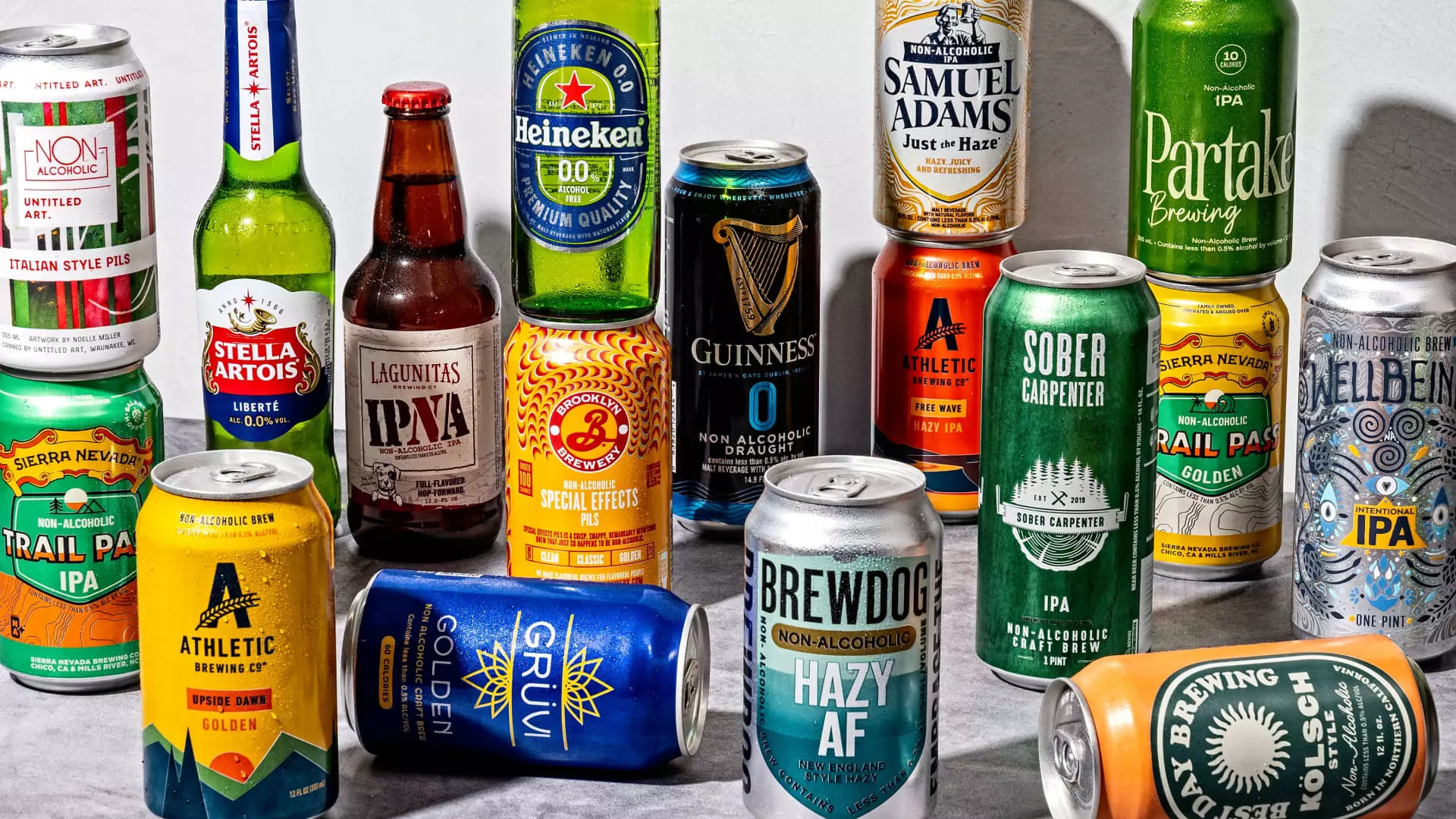In a world increasingly leaning towards wellness and mindful consumption, non-alcoholic (NA) beer is poised to disrupt the traditional beer market in a significant way. Recent data indicates that non-alcoholic beer is on track to surpass ale as the second-largest beer category globally within this year. This evolution reflects broader cultural shifts, particularly among younger generations who are prioritizing health and well-being over the fleeting pleasures of intoxication. The rise of what has been termed the “sober curious” movement showcases the desire for social inclusion without the associated buzz of alcohol, pushing the boundaries of conventional drinking norms.
The Numbers Don’t Lie: An Industry Transforming
According to projections from industry tracker IWSR, non-alcoholic beer’s global volume has surged by an impressive 9% while the overall beer market has dipped by 1%. This data isn’t just a blip on the radar; it indicates an accelerating trend that began in 2018 and has consistently outpaced the broader beer category. The IWSR forecasts an annual growth of 8% for non-alcoholic beer until 2029, while ale is expected to see a decline of 2% annually in the same timeframe. This discrepancy speaks volumes about consumer preferences and the shifting tides in the beverage industry.
Non-alcoholic beer, while still accounting for only around 2% of the worldwide beer market, is gaining traction in a way that could substantially reshape how we view and consume beer. The preeminence of lager, capturing 92% of the market share, still looms, but the emergent popularity of non-alcoholic options represents a new frontier for breweries willing to innovate.
Consumer Consciousness: A Cultural Shift
The evolution towards non-alcoholic beer can be traced to a meaningful cultural transformation particularly apparent among Millennials and Gen Zers. These younger cohorts are eschewing traditional drinking habits, signaling a marked decrease in alcohol consumption compared to previous generations at the same age. They are motivated not only by health consciousness but also by the desire to maintain social interactions without the weight of alcohol. Terms like “damp lifestyle” emerge as descriptors for those who are modulating their drinking rather than withholding altogether—an indication that the stigma surrounding sobriety is loosening.
Brands like Athletic Brewing, which dominate the NA beer market with a 17% volume share, emerge as champions of this new consumer ethos. The company’s rapid growth from a mere 4% market share three years prior showcases an agility and understanding of consumer demands that larger companies may struggle to match. This trend is not just a fleeting novelty; it represents a profound shift in how we engage with our beverage choices.
The Brewing Giants Take Notice
Major players in the brewing sector are not blind to this change. The interest in non-alcoholic beer from established large-scale producers such as Diageo’s Guinness and Anheuser-Busch InBev’s Budweiser speaks to the industry’s recognition of this burgeoning market. Notably, countless brands have launched zero-proof alternatives in recent years, honing in on the demand for flavors that mirror their alcoholic counterparts. The better these non-alcoholic offerings taste, the stronger the draw they will have on consumers who are sticking with moderation.
Interestingly, even celebrity endorsements are adding an intriguing twist to the non-alcoholic beer narrative. With major figures like Tom Holland and Dwyane Wade lending their names to this category, it bridges the gap between popularity and acceptability. Such endorsements not only serve to normalize NA beer but also position it as a desirable option for those looking to engage in social settings without the need to consume alcohol.
Sustainability Meets Savvy Consumption
The rise of non-alcoholic beer is not merely another trend; it represents a potential sea change in consumer behavior. As we grapple with topics of sustainability and health, the preference for non-alcoholic alternatives seems poised to grow, particularly as consumers increasingly demand authenticity, transparency, and quality in what they consume. NA beer’s market dominance may still be distant, but its trajectory is undeniable. As we head toward 2029, one has to wonder what impact this category will have in reshaping the broader alcohol industry and how we view social drinking in the years to come. It beckons a reimagining of our shared experiences and invites a new narrative that might just hold the key to a more mindful and inclusive drinking culture.


Leave a Reply